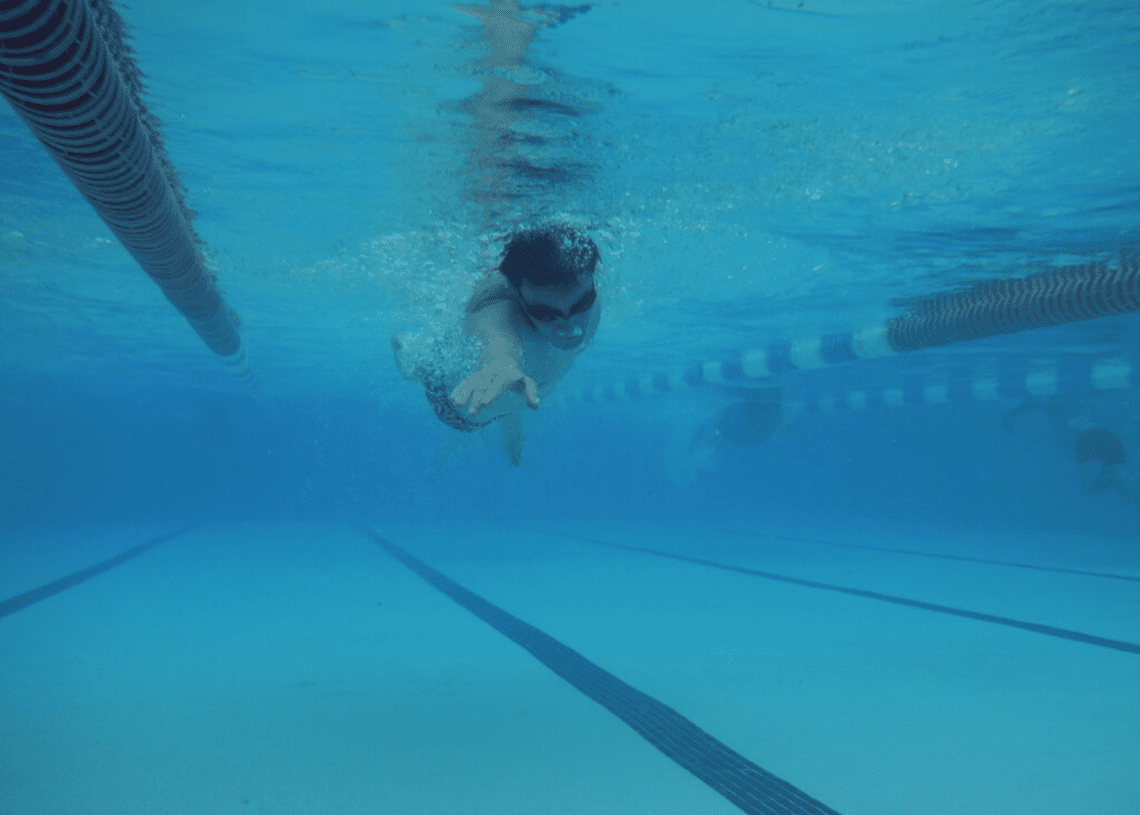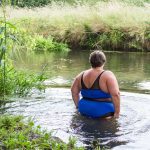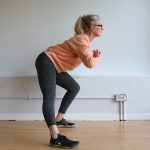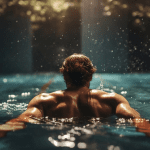
Create your own winter swimming training plan
If you have the budget and want to progress quickly, a good swimming coach can create a training plan to suit your needs – and can help in other ways too. But if you don’t have the funds or if you would prefer to be your own coach, then this brief guide will help you get started.
In simple terms, becoming a faster open water swimmer involves the following:
• Improving your swimming technique
• Increasing your swimming fitness
• Becoming more comfortable and confident in a range of natural water conditions
• Developing your open water swimming skills
All you need to do then is design a training programme that develops all these areas. Easier said than done, I know, but it can be done. Let’s dive right in.
For a casual or recreational swimmer who wants to be in a good position to tackle a range of open water swim challenges next summer, I’d recommend building a plan around three training sessions per week.
Session 1 – Technique focus, 30 minutes to 1 hour
Do this in the pool in winter. After a gentle warm up, do a series of swimming drills or stroke focus exercises. The exact exercises you do will depend on where you are in your swimming journey, and you may need some coaching advice to get started – but see below for some suggestions. Keep the effort level light so you can focus on swimming with great technique. As the water outside warms up in spring, you can take this session outside and work on open water skills (prioritise sighting, navigation and swimming straight).
Session 2 – Speed and pace focus, 45 minutes to 1.5 hours
This can be done in the pool or open water, although it’s easier to be consistent and monitor progress in the pool. After a 10 to 15 minute warm up, aim to cover around 1200m to 2400m broken into sets of 50m, 100m or 200m (or a combination of these) with a short rest (10 to 30s) in between each. Swimming at about the speed you can hold for a mile, aim to swim each short interval at the same pace.
If you’re familiar with Critical Swim Speed (CSS) training, then this is the time to do a CSS-based session. If not, it’s a topic worth exploring if you want to manage your own training at a higher level.
Session 3 – Endurance focus, 45 minutes to 2 hours plus
This is where you build your confidence and endurance to tackle longer swims. While you could simply swim steadily for the allocated time (and this is worth doing occasionally), you may find it more helpful and enjoyable to chunk this session into shorter swims of 400m or longer. It can be done in the pool or open water.
If you have more time you want to allocate to improving your swimming, you should find it helpful to add one to two 15-minute land-training sessions each week where you work on mobility and core strength. Beyond that, I’d suggest adding a session where you worked on the other competitive swimming strokes, more drills and technique exercises or a shorter speed and pace session, depending on what would be most useful and enjoyable for you.
Build your swimming distances gradually over many weeks
To take this further, you should tailor this basic structure to your needs based on where you are now and where you want to get to. For example, if you have good overall fitness from another sport but poor swimming technique then prioritise improving your stroke. If the longest open water swim you want to do is a mile, then swim sessions of an hour will be plenty. Those of you targeting 5 or 10km will benefit from two-hour sessions or even longer. You also need to factor in progression and recovery.
Build your swimming distances gradually over many weeks rather than start with the maximum
distance you plan to do. And once per month or so, schedule an easy week where you step down in distance and intensity.
All this planning and preparation sounds daunting and takes time, which is why some people seek assistance from a coach but you can do this yourself. It doesn’t have to be perfect. Most of us will see lots of benefits with a home-made programme. Getting your programme roughly right is much better than not having a plan at all.
A few other thoughts on swim training
• Something is almost always better than nothing.
• Doing too little but looking forward to each swim is better than doing too much and resenting it.
• Doing a little bit often but consistently is better than inconsistent marathon sessions.
• Stay focused on your swimming. Track the movement of your hands, the timing of your kick and the amount of rotation in your body. Focus on one part at a time.
• If you’re not enjoying it or not feeling satisfied after a swim, change it up so that you are.
• If you can, get your stroke analysed by a coach and ask them for drills and exercises specific to you.
Some drills and exercises you can try
Ideally, drills and focus exercises should focus on specific and personal improvement points. These will often come from a coach. However, even if you don’t have these, there is value in doing drills as they improve your proprioception and feel for the water.
Here are a few you can try.
Push and glides
Start from a wall, push off with your feet and get into a streamline position with your hands locked together. See how far you get. Try holding light tension through your body, varying your head position and thinking about pressing your legs together. Do any of those help you get further?
Kick on your back
Start floating on your back, place your hands on your backside and kick your legs gently. Feel the initiation of the kick starting in your glutes, keep your legs as straight as you can and let your ankles flex. Try doing this on your side and front too, rotating as necessary to breathe.
Focus on breathing
Swim single lengths and focus on your breathing. Try to breath out gently while your face is in the water and keep your head low in the water while breathing in. Can you keep one eye in the water while breathing in?
Finger drag drills
On front crawl, as your arm recovers, drag your fingers over the water surface. This is not something to do when generally swimming but a useful exercise to sense how your hand and arm is moving.
Swim on rails
Imagine you’re swimming on rails about shoulder width apart. Ensure your hands follow the path of the rails. This helps find the correct entry point and should stop both crossing over the centre line at the front of the stroke or sweeping your arm either too far under your or outside of your body.
Sighting
This is an open water skill you can work on in the pool. Practice looking forward every 4 to 8 strokes without breaking the rhythm of your stroke. You can practice lifting your head either immediately before or after you take a breath – which one works best for you? Only lift as much as you need to see. In flat water, your nose and mouth can stay in the water.
What about off-the-shelf training plans and sessions?
You may be tempted to grab an off-the-shelf training plan or follow a swim session you find online. These can be useful (and we publish them occasionally at Outdoor Swimmer) but it’s unlikely you will find one that exactly suits your needs. It is often better to use these plans as guides and sources of ideas but adapt them to your own needs and experience.
This article is from the Outdoor Swimmer Training Guide 2023.









